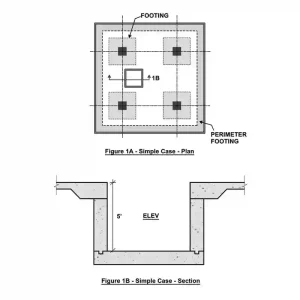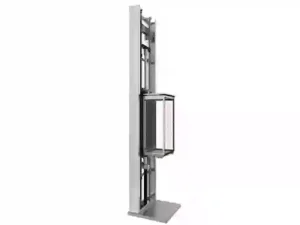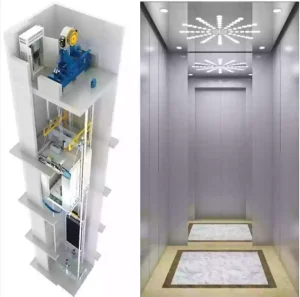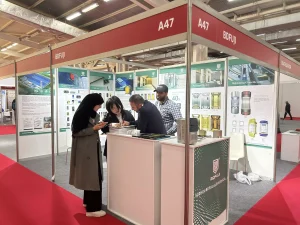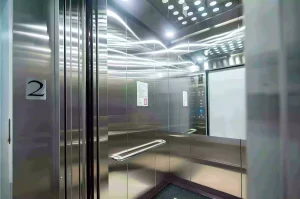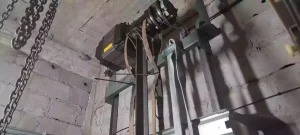When installing a passenger elevator, it is particularly important to understand the passenger elevator dimensions of the passenger elevator in advance, which includes the internal and external dimensions of the elevator car, the passenger elevator shaft dimensions, the passenger elevator pit dimensions, and the door dimensions. Using standard passenger elevator sizes to build an elevator is not only to meet building regulations and barrier-free requirements, but also to help you save a lot of time and cost.
What is a Passenger Elevator?
Before understanding the size of a passenger elevator, let’s first briefly understand what a passenger elevator is and its basic structure.
A passenger elevator is a vertical transportation device specifically used to transport passengers, and is a type of commercial elevator. It is widely installed in office buildings, hotels, shopping malls, airports, subway stations and other buildings. Unlike freight elevators, passenger elevators pay more attention to riding comfort and safety.
Basic Structure Of Passenger Elevators
| Component | Description | Example/Details |
|---|---|---|
| Cabin |
The space where passengers ride, similar to a small room, usually equipped with handrails, flooring, and lighting. | – Residential Elevator: Width 1000-1400mm, Depth 1200-1600mm, Load Capacity 320-1000kg
– Commercial Elevator: Width 1100-1600mm, Depth 1400-2000mm, Load Capacity 630-1600kg |
| Drive System |
Includes electric motor, traction machine, and drive chain to move the cabin up and down. | Common types: Traction elevator, Hydraulic elevator, Machine-room-less (MRL) elevator. |
| Control System |
Manages elevator operations, such as start, stop, leveling, and emergency braking. | Modern elevators feature intelligent control panels for real-time monitoring of status and passenger flow. |
| Guide Rail and Traction Machine |
Guide rails keep the cabin moving vertically within the shaft. The traction machine uses steel ropes or chains to move the cabin. | Example: In high-rise buildings, the traction machine ensures smooth and stable vertical movement. |
| Safety Device |
Includes speed governor, safety gear, buffer, and emergency power to ensure braking during emergencies. | Example: Brands like Schindler and OTIS use dual braking systems; even if the main brake fails, the backup brake activates instantly. |
Conventional Dimensions And Sizes of Passenger Elevators
I believe that now you have a certain understanding of passenger elevators, so let’s take a look at the conventional dimensions and sizes of passenger elevators. The conventional dimensions of passenger elevators mainly include car dimensions, shaft dimensions, pit dimensions, and door dimensions.
1. Elevator Car
The size of the passenger elevator car directly determines the carrying capacity and passenger comfort. The typical passenger elevator dimensions will vary depending on the purpose and scenario of the elevator. Generally speaking, the size standards of passenger elevators for different building types in the international market are as follows:
Residential elevators:
- Standard size: 1000-1400mm wide, 1200-1600mm deep
- Load capacity: 320-1000kg (4-13 people)
- Application scenarios: multi-story residential buildings, apartment buildings
Example: In an apartment building in London, a BDFUJI brand residential elevator was installed. The car size is 1100x1400mm, which can accommodate 8 passengers, and it runs smoothly and has low noise.
Commercial elevators:
- Standard size: 1100-1600mm wide, 1400-2000mm deep
- Load capacity: 630-1600kg (8-21 people)
- Application scenarios: office buildings, shopping malls, hotels
Example: In a commercial complex in New York, a BDFUJI brand commercial elevator was installed, with a width of 1500mm and a depth of 1800mm, which effectively copes with the flow of people during peak hours.
Hospital elevator:
- Standard size: 1400-2000mm wide, 2400-2800mm deep
- Load capacity: 1600-2500kg (stretcher elevator)
- Application scenarios: Hospitals, nursing homes
Example: In a hospital in Sydney, a BDFUJI hospital elevator with a width of 1600mm and a depth of 2500mm is used to ensure smooth access to beds and emergency equipment.
High-rise office elevator:
- Standard size: 1500-1800mm wide, 1800-2400mm deep
- Load capacity: 1000-1600kg (15-20 people)
- Application scenarios: Super high-rise commercial buildings
Example: A business building in Dubai uses a BDFUJI brand elevator with a car width of 1700mm and a depth of 2200mm, which can accommodate 20 people and a lifting speed of up to 4m/s.
2. Elevator Shaft Size
The elevator shaft is the passage space that accommodates the elevator car and counterweight. Its size depends on the load and speed of the elevator. The rationality of the shaft design directly affects the difficulty of elevator installation and subsequent maintenance.
Residential elevator shaft:
- Size: 1500-1800mm wide, 1600-2000mm deep
- Features: Compact layout, reducing building footprint
Commercial elevator shaft:
- Size: 1800-2200mm wide, 2000-2500mm deep
- Features: Large load capacity, suitable for multiple passenger flows
Machine roomless elevator shaft:
- Size: 1600-2000mm wide, 1800-2300mm deep
- Features: Cancel the machine room, occupy a smaller area, suitable for modern building renovation projects
3. Elevator Pit Size
The pit is the space at the bottom of the elevator for installing buffer devices and shock absorbing facilities. The depth of the pit determines the smoothness and safety of operation.
Standard pit depth:
- Residential elevator: 1100-1400mm
- Commercial elevator: 1400-1600mm
- High-rise elevator: 1800-2200mm
- Machine roomless elevator: 1000-1400mm
4. Elevator Door Size
The size of the elevator door directly affects the efficiency of passengers entering and exiting, and is usually divided into single-opening door, double-opening door and center-split door.
- Single door: 700-900mm wide, 2000-2100mm high
- Double door: 1000-1400mm wide, 2000-2100mm high
- Center door: 1200-1500mm wide, 2100mm high
Dimensions of Different Types of Passenger Elevators
In addition to the standard passenger elevator dimensions, different types of passenger elevators also have slight differences in size. We can briefly understand:
1. Traction Passenger Elevator
Traction passenger elevators rely on electric motors to drive the traction wheel, and pull the car and counterweight balance through steel wire ropes. It is the first choice for high-rise and super-high-rise buildings, and is popular for its high speed, low energy consumption, and smooth operation.
Traction Elevator Standard size:
- Car size: 1100-1400mm wide, 1400-1600mm deep
- Shaft size: 1800-2200mm wide, 2000-2500mm deep
- Pit depth: 1400-1800mm
- Machine room space: above the top floor, at least 2000mm high
- Door width: 800-1000mm
Tips: According to a study by Google Scholar, traction elevators are superior to hydraulic elevators in energy efficiency and stability, especially in buildings over 50 meters, with an operating efficiency increase of about 30%.
2. Hydraulic Passenger Elevator
Hydraulic elevators mainly rely on hydraulic cylinders to push the car up, and the return oil volume is controlled to decrease. Its advantages are strong load-bearing capacity and flexible installation, and are mostly used in low-rise or medium-rise buildings, such as hospitals and shopping malls.
Hydraulic Passenger Elevator Standard size:
- Car size: 1200-1600mm wide, 1500-1800mm deep
- Shaft size: 1600-2000mm wide, 1800-2300mm deep
- Pit depth: 1100-1400mm
- Machine room space: located beside the pit, at least 1500mm high
- Door width: 900-1200mm
Tips: In the discussion on Quora, many engineers said that hydraulic elevators are more suitable for buildings below 15 floors, because within this height, their operating stability and installation flexibility are better than traction elevators.
3. MR Passenger Elevator
The small machine room elevator (MR, Machine Room) concentrates the drive system in a small machine room at the top, effectively saving space. It is cost-effective, energy-saving, and environmentally friendly, and is widely used in medium and low-rise commercial and residential buildings.
MR Passenger Elevator Standard size:
- Car size: 1000-1400mm wide, 1300-1600mm deep
- Shaft size: 1500-1800mm wide, 1600-2000mm deep
- Pit depth: 1000-1300mm
- Machine room space: minimum 2000mm height
- Door width: 800-1000mm
4. Machine Room-Less Passenger Elevator
Machine Room-Less Elevator (MRL) installs a drive device at the top of the shaft, completely eliminating the independent machine room, and has become a new favorite in modern high-rise buildings. It saves building space and has low maintenance costs.
Machine Room-Less Passenger Elevator Standard size:
- Car size: 1100-1500mm wide, 1500-2000mm deep
- Shaft size: 1600-2000mm wide, 1800-2400mm deep
- Pit depth: 1100-1400mm
- Door width: 900-1200mm
Tips: Machineless passenger elevators are very suitable for elevator renovation projects because they do not require an additional independent machine room, cause less damage to the building structure, and can also reduce certain civil construction costs.
Frequently Asked Questions
How deep should the pit of a passenger elevator be?
Usually, the pit depth of residential elevators is 1100-1400mm, that of commercial elevators is 1400-1600mm, and that of high-rise elevators can reach 1800-2200mm.
What is the best use of passenger elevators?
Passenger elevators are suitable for buildings with large vertical transportation needs, such as residential buildings, hotels, commercial complexes, etc.
Who invented the passenger elevator?
The concept of passenger elevator originated in 1853, when Elisha Otis invented the first elevator with a safety brake, which completely changed the modern building structure.
Knowing the size of the passenger elevator in advance is a very important step in planning and installing the elevator, which directly affects whether the project can proceed smoothly. Of course, the numerous data may make you overwhelmed. In order to avoid trouble and mistakes, it is recommended that you directly consult a professional elevator manufacturer to obtain the best passenger elevator solution, such as: BDFUJI. We have a professional elevator consulting team to serve you, and you can get the elevator solution that suits you from us.






